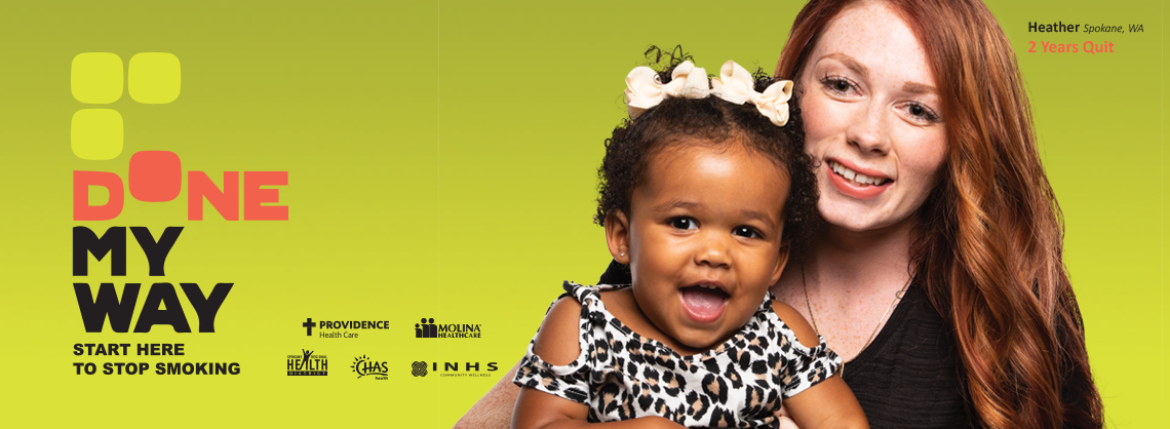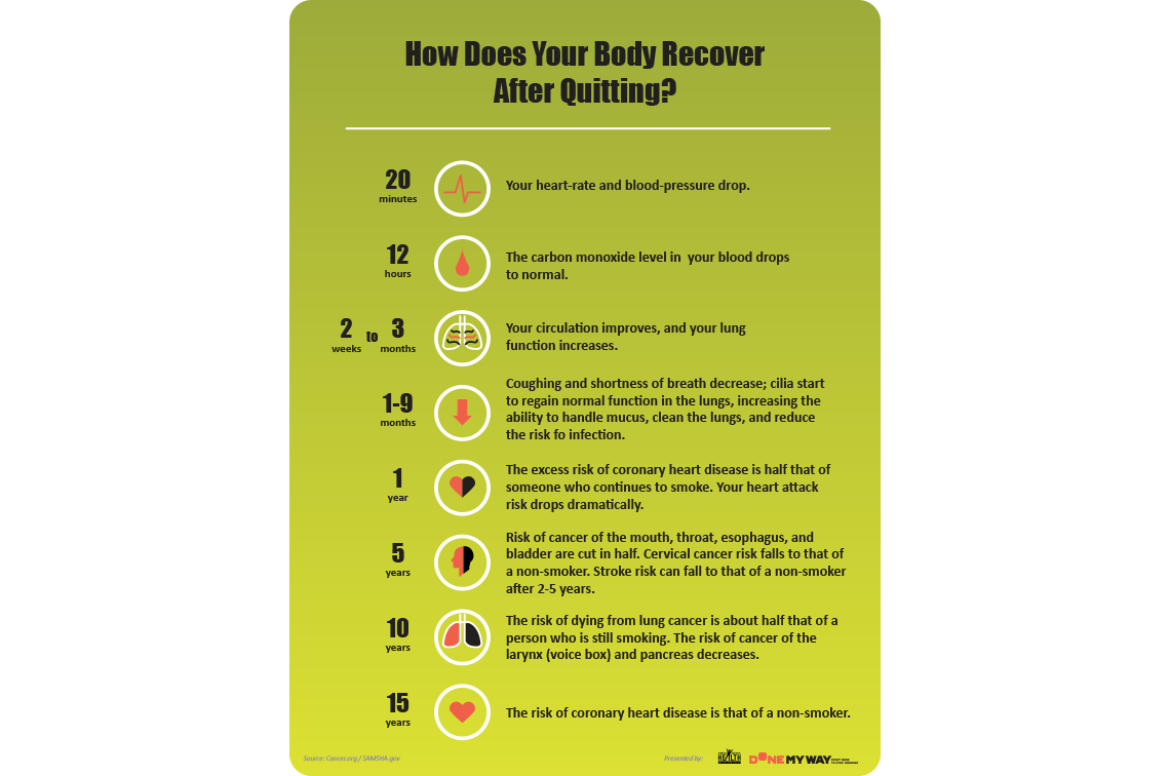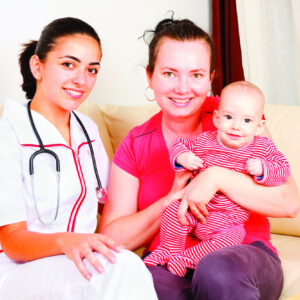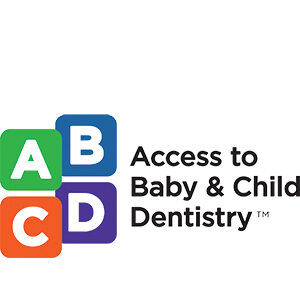

Smoking and Pregnancy
If you are planning to become pregnant, the best thing you can do for your baby’s health is stop smoking. If you are currently pregnant, it’s never too late to stop smoking. Smoking during pregnancy will harm your baby.
- Health Impacts of Smoking During Pregnancy [1]
- Smoking during pregnancy is harmful to your baby. It can cause things like:
- The baby being born too early (premature birth)
- The baby being born at a lower birth weight or with a birth defect
- The baby being more likely to die from sudden infant death syndrome (SIDS)
- Smoking during pregnancy is harmful to your baby. It can cause things like:
- Secondhand Smoke [2]
- Secondhand smoke is smoke that comes from cigarettes. It contains more than 7,000 chemicals, some which cause cancer. Any amount of secondhand smoke exposure is unsafe. Babies and children exposed to secondhand smoke are more likely to experience:
- More frequent and severe asthma attacks
- Respiratory infections
- Ear infections
- Sudden infant death syndrome (SIDS)
- Secondhand smoke is smoke that comes from cigarettes. It contains more than 7,000 chemicals, some which cause cancer. Any amount of secondhand smoke exposure is unsafe. Babies and children exposed to secondhand smoke are more likely to experience:
- Thirdhand Smoke [3]
- Thirdhand smoke is lingering particles from secondhand smoke. The chemicals from cigarette smoke mix with other pollutants in the air and together the chemicals let off cancer causing compounds. Thirdhand smoke clings to things like clothing, furniture, walls, and to the inside of vehicles where children can be exposed. To help prevent thirdhand smoke exposure:
- Avoid smoking indoors
- Avoid smoking in vehicles
- Make sure to wash your hands and change your clothes after smoking and before being near children
- Thirdhand smoke is lingering particles from secondhand smoke. The chemicals from cigarette smoke mix with other pollutants in the air and together the chemicals let off cancer causing compounds. Thirdhand smoke clings to things like clothing, furniture, walls, and to the inside of vehicles where children can be exposed. To help prevent thirdhand smoke exposure:
[1] Center for Disease Control and Prevention. (April 23, 2018). Pregnant or Planning to Have a Baby. Retrieved October 31, 2018 from https://www.cdc.gov/tobacco/ca...
[2] Center for Disease Control and Prevention. (January 17, 2018). Health Effects of Secondhand Smoke. Retrieved October 31, 2018 from https://www.cdc.gov/tobacco/da...
[3] Mayo Clinic. (July 13, 2017). What is third hand smoke and why is it a concern? Retrieved October 31, 2018 from https://www.mayoclinic.org/hea...

Types of NRT. [1]
| NRT TYPES |
HOW TO GET THEM |
HOW TO USE THEM |
|---|---|---|
| PATCH | Over the counter |
Place on the skin Gives a small and steady amount of nicotine |
| GUM | Over the counter | Chew to release nicotine Chew until you get a tingling feeling, then place between cheek and gums |
| LOZENGE | Over the counter | Place in the mouth like hard candy Releases nicotine as it slowly dissolves in the mouth |
| INHALER | Prescription | Cartridge attached to a mouthpiece Inhaling through the mouthpiece gives a specific amount of nicotine |
| NASAL SPRAY |
Prescription | Pump bottle containing nicotine Put into nose and spray |
[1] Center for Disease Control and Prevention. (September 17, 2018). Learn About Nicotine Replacement Therapy. Retrieved October 31, 2018 from https://www.cdc.gov/tobacco/ca...

Nurse-Family Partnership
Free program for women who are pregnant with their first baby. Enrolled moms are connected to a registered nurse who provides the support, advice and information needed to have a healthy pregnancy and be a great mom.

Weed to Know for Baby & You
Providing facts around harms associated with marijuana use during pregnancy, breastfeeding and caregiving.

Access to Baby & Child Dentistry Program
Matches Medicaid-eligible children, ages 0-6, to a dentist for fluoride, exams, parent education and restorative care.

